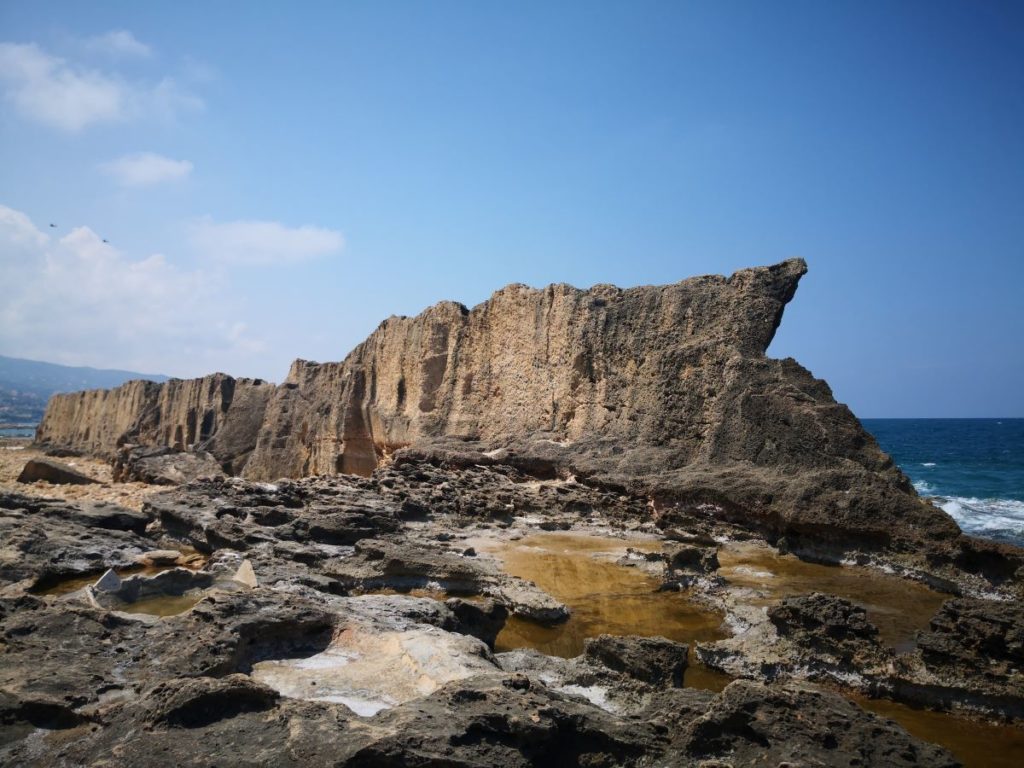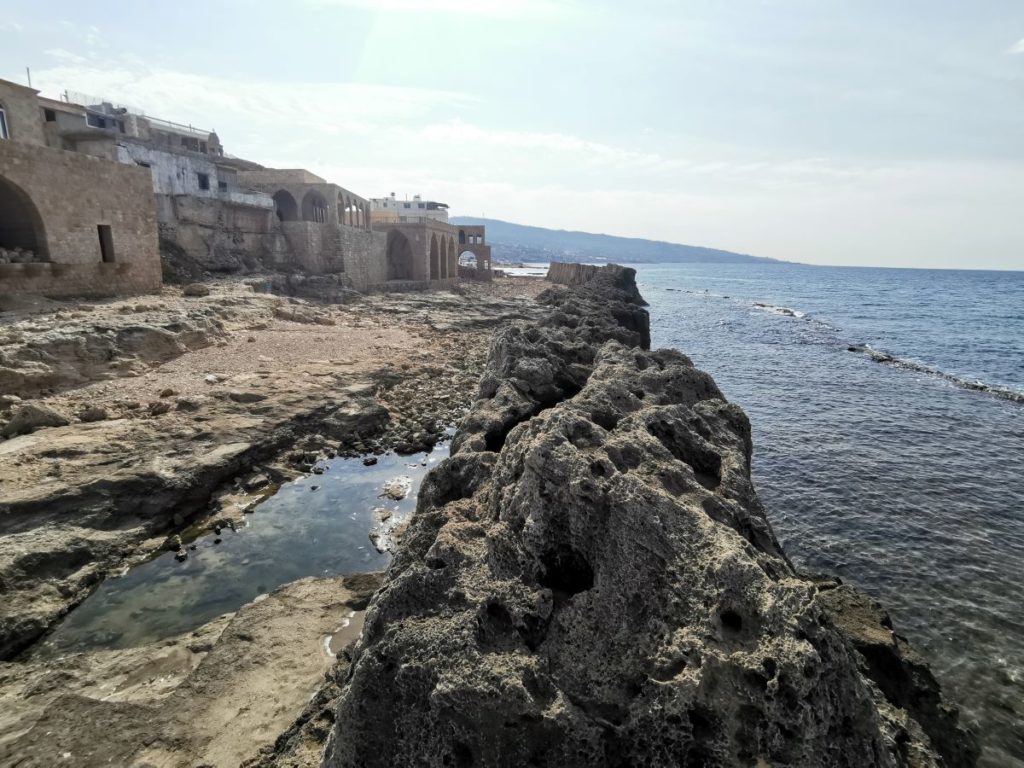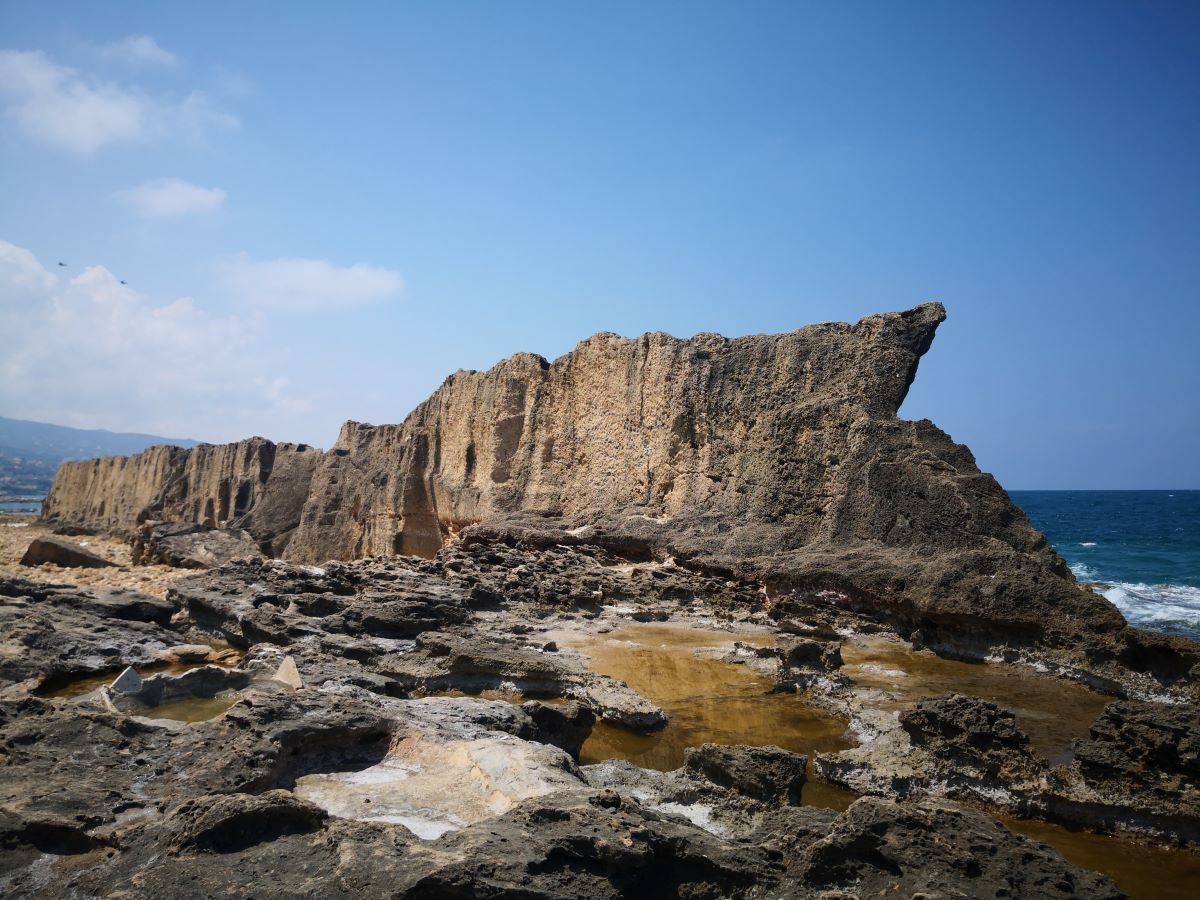Batroun features a unique carved sea wall resulting from a sandstone quarry exploitation.
Toponym
The “Phoenician Wall” is a designation given by the locals who believe that the wall dates to the Phoenician era, a theory not yet confirmed to date.
Structure
The wall is a section that remains from the Batroun promontory that was exploited as a quarry in ancient times. It stretches over two hundred and twenty meters from north to south, with a maximum height of five meters, with an average width of one to two meters. To the south, the wall ends abruptly a few meters from the shore, near a circular bay, the supposed old port of the city. To the north, it stops just as abruptly near an area flattened by man.
The wall is believed to have sheltered a port or shallow-draft ships, while other scholars propose that it protected the workers during the quarry exploitation. At a certain period, the ditch that seperates the wall from the promonotory is believed to have housed buildings, perhaps warehouses. This hypothesis is reinforced by the presence of recesses in the cliff that could constitute the rock walls of rooms whose masonry have disappeared.
Debris imprisoned in the cement covering the platform of the ditch date from the Hellenistic and Roman periods, which suggests that the site was used as a quarry since that time.
Karim Sokhn
Tour Operator & Tour Guide
https://journals.openedition.org/mediterranee/2052



